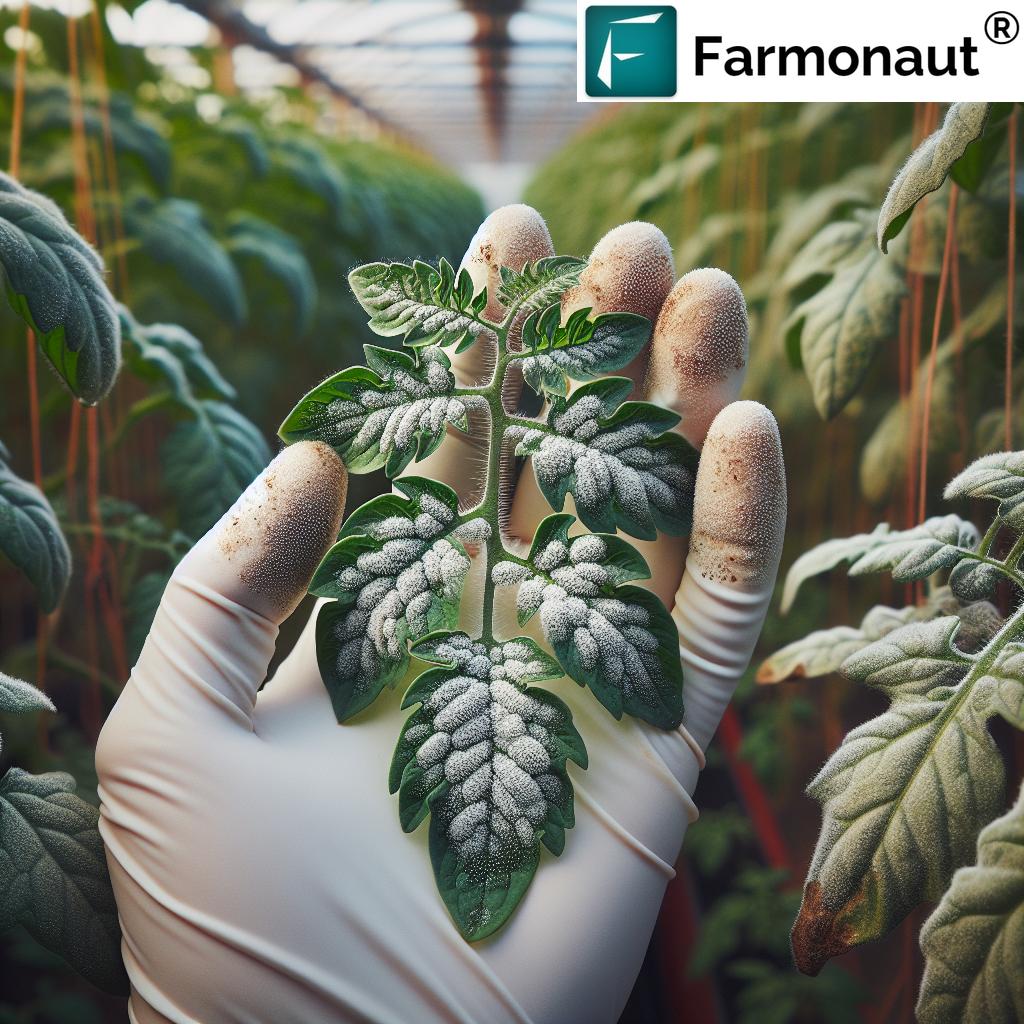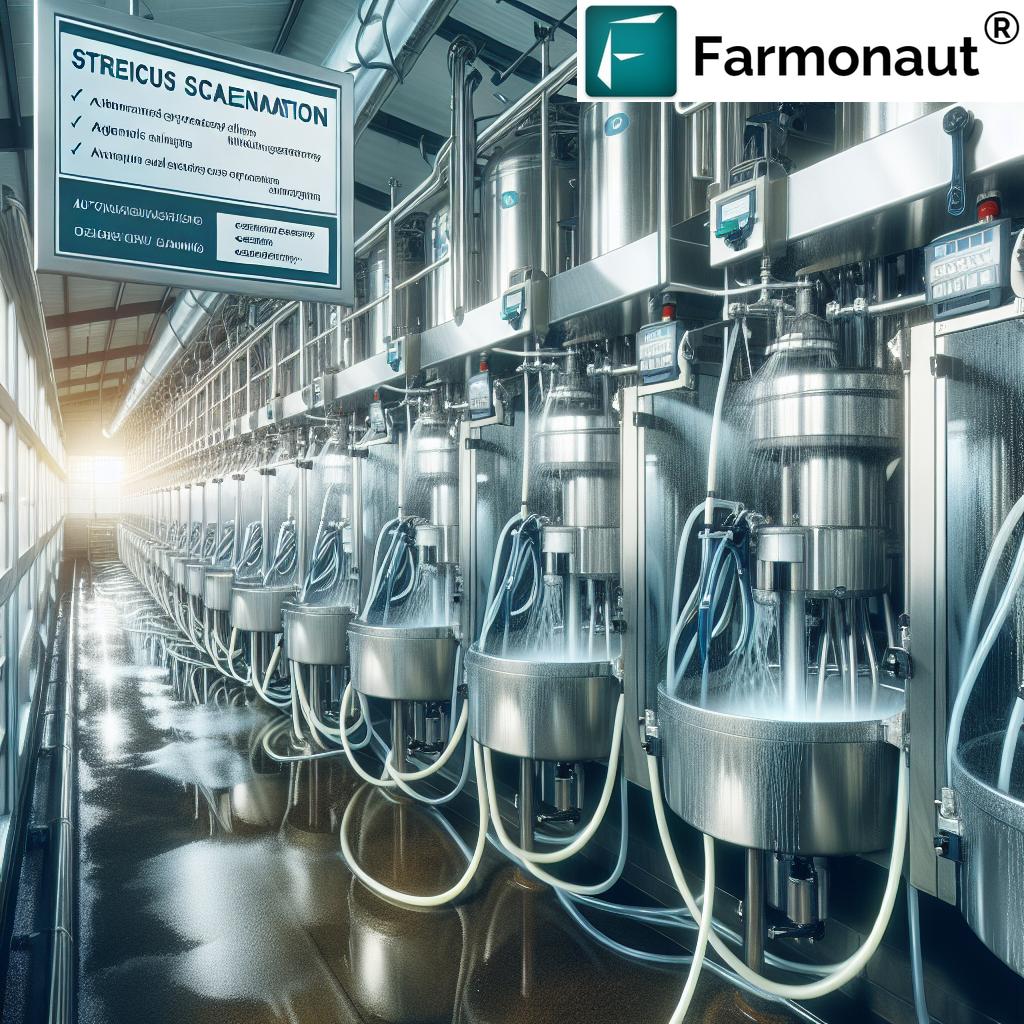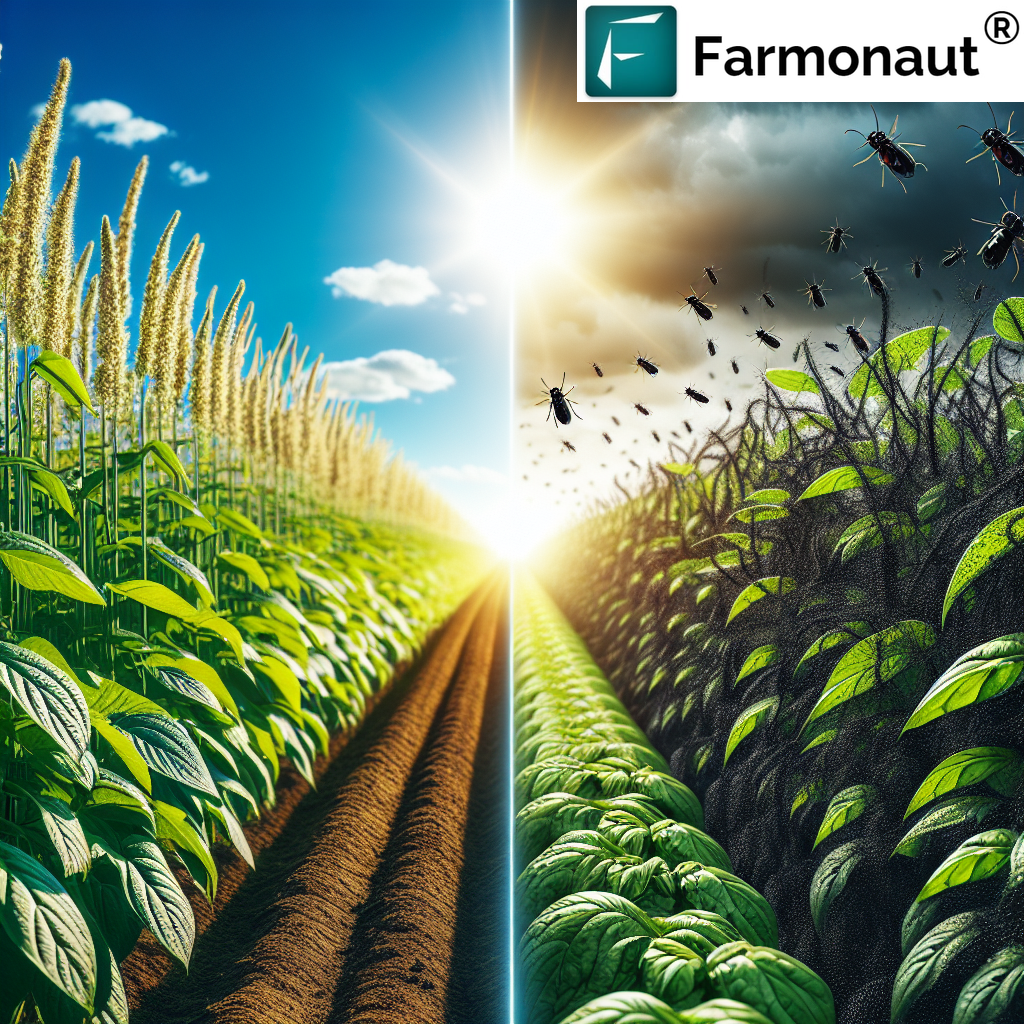Table of Contents
- Introduction
- Environmental Challenges in Dairy Farming
- Overview: Sustainable Dairy Farming
- 7 Secrets to Sustainable Dairy Farming
- Comparison Table of Sustainable Practices
- Challenges and Considerations in Dairy Farming Sustainability
- Farmonaut’s Role in Sustainable Dairy Farming
- Frequently Asked Questions
- Conclusion
How to Make Dairy Farming More Sustainable: 7 Secrets
Dairy farming is a cornerstone of global food production, fulfilling vital nutritional needs for billions. However, as stewards of the environment and stakeholders in the dairy industry, we recognize the urgent need to make dairy farming more sustainable. The impact of dairy operations on our planet is significant, notably through greenhouse gas emissions, water usage, land demands, and resource management challenges. As the necessity for dairy continues to rise, we must innovate and adopt practices that ensure both environmental viability and economic sustainability.
In this comprehensive guide, we reveal 7 secrets to sustainable dairy farming. These strategies not only address the industry’s biggest environmental issues—including reducing methane emissions, optimizing water conservation, and more—but also align with the latest precision farming technologies and actionable management systems. If you want your dairy farm to thrive for generations while supporting a greener future, read on as we delve into effective, science-driven, and practical solutions.
Environmental Challenges in Dairy Farming
Dairy farm environmental impact is multifaceted and complex. As we evaluate the sector, it’s clear that traditional dairy farming practices present several major sustainability challenges:
- Greenhouse Gas Emissions: Dairy cows contribute significantly to methane emissions via enteric fermentation. Methane is over 80 times more potent than carbon dioxide in the short term, compounding climate change concerns.
- Land and Water Demands: Dairy production demands vast lands—for grazing and feed crops—sometimes leading to deforestation and biodiversity loss. Water is essential at nearly every stage, from hydration and cleaning to milk production itself.
- Resource Scarcity and Pollution: Inefficient water use leads to scarcity concerns. Improper manure management is a key factor behind soil and water pollution, as nutrient runoff causes algal blooms and aquatic ecosystem degradation.
- Regulatory and Economic Pressures: As environmental regulations tighten worldwide, the industry faces uncertainties that can affect investment, production, and the overall economic viability of dairy farms.
With such wide-ranging impacts, it is clear: To safeguard the future of the industry and our planet, adopting sustainable practices—from dairy manure management techniques to precision dairy farming technologies—is no longer optional.
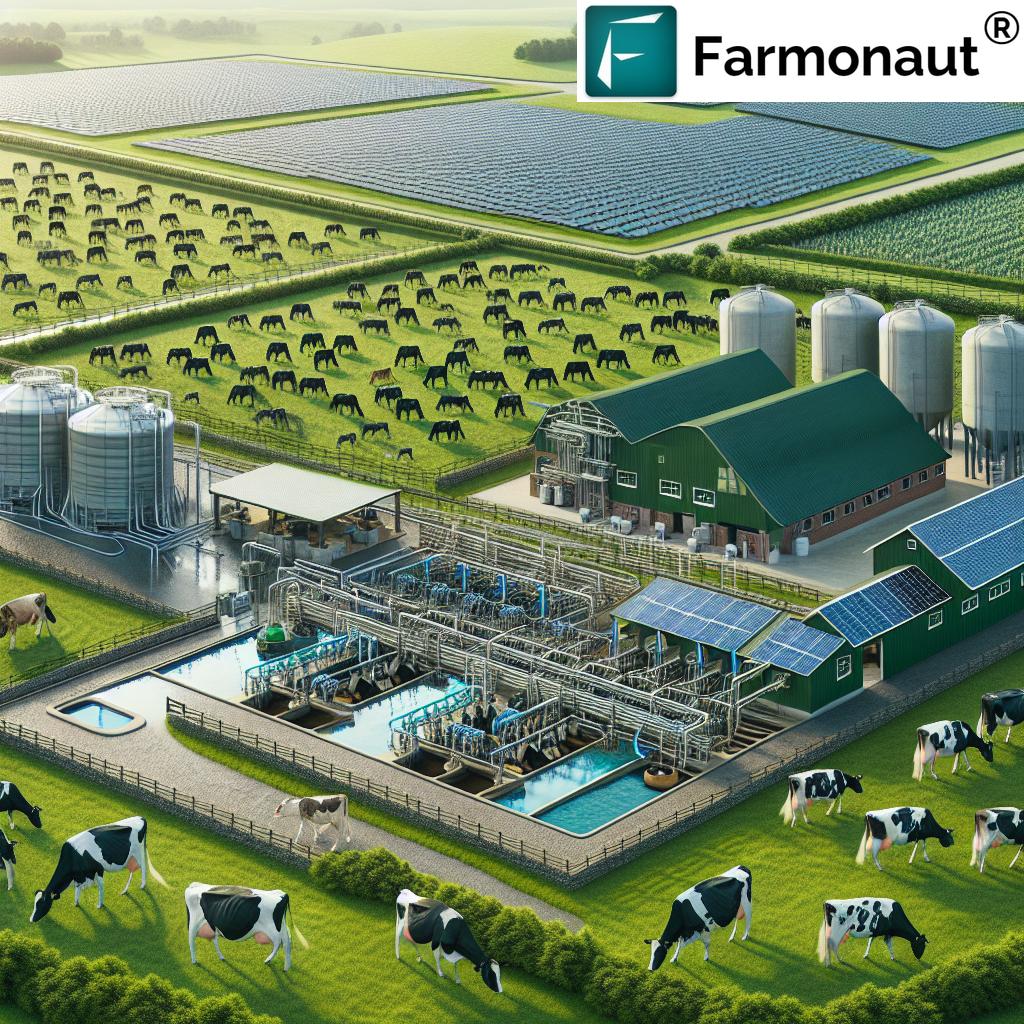
Overview: Sustainable Dairy Farming for a Greener Future
Sustainable dairy farming centers on reducing greenhouse gas emissions, minimizing resource wastage, and enhancing soil health—all while delivering quality milk production. By embracing an integrated approach that includes emerging technologies and eco-friendly management systems, we can pave the way for a resilient, productive, and environmentally responsible dairy sector.
Let’s deep-dive into the 7 most impactful secrets that make sustainable dairy farming possible—solutions that not only benefit our farms and animals, but also our environment and future generations.
7 Secrets to Sustainable Dairy Farming
1. Optimizing Feed and Diets – The Key to Reducing Methane Emissions in Dairy Cows
Optimizing cow diets is a game-changer for reducing methane emissions in dairy cows. Enteric fermentation—an essential part of the cow’s digestive process—releases methane each time cows digest their food. This process is responsible for up to 40% of the greenhouse gas emissions dairy industry produces.
- Incorporating Feed Additives: By incorporating certain essential oils, plant extracts, or specialized additives like Agolin® into cow diets, we can hinder the microbes responsible for methane formation in the rumen, reducing methane emissions per cow.
- Improving Digestion Efficiency: Feed strategies that promote quicker and more complete digestion (such as high-quality, easily digestible forages) lower methane output and boost milk production at the same time.
- Monitored Blends & Trials: Trials with additive blends have demonstrated potential methane reductions of 10–30% per cow, enhancing farm sustainability and efficiency.
Adoption of such feed optimization practices can be scaled depending on farm size, and it’s vital to monitor animal health and milk yield to ensure both environmental and economic benefits.
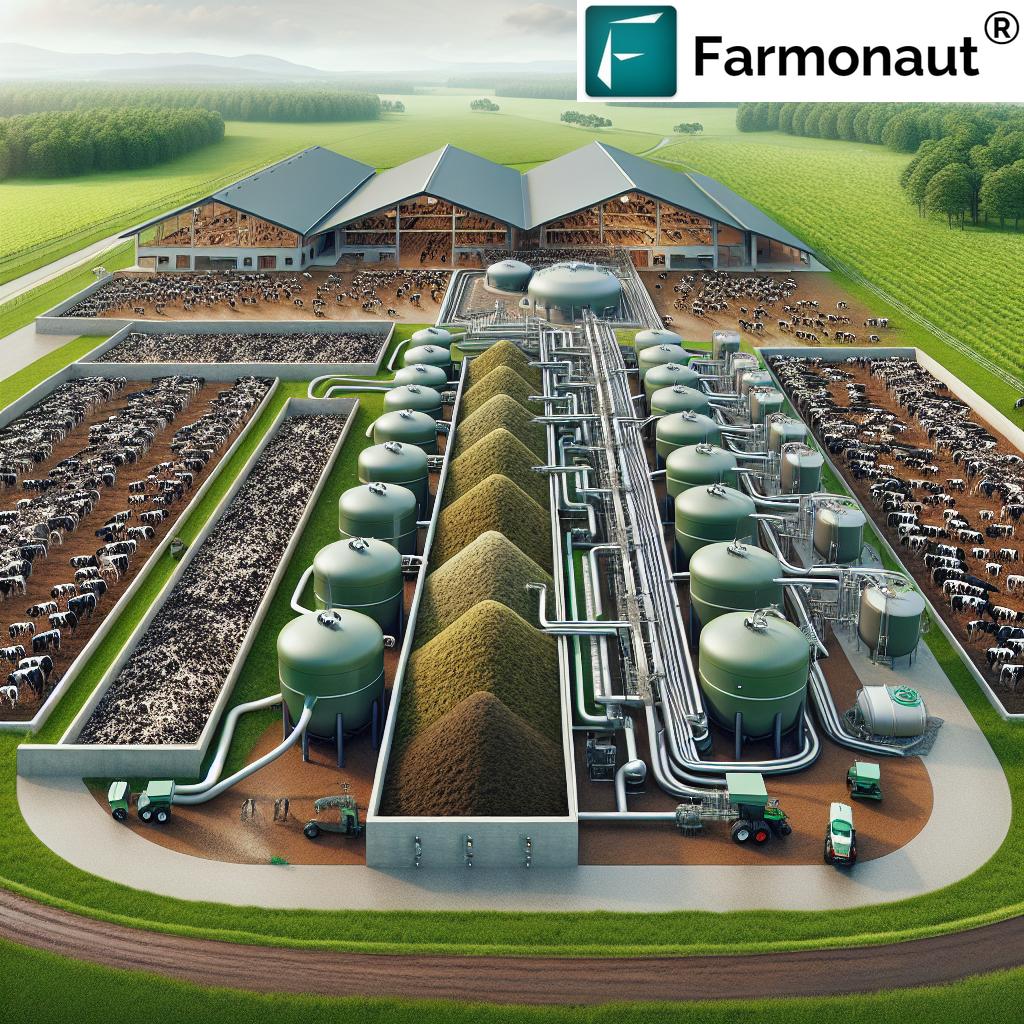
2. Manure Management – Turning Waste into Environmental Opportunity
Manure management is an integral component of sustainable dairy farming. Improper handling leads to water pollution, soil degradation, and the release of methane and nitrous oxide—both potent greenhouse gases. By prioritizing dairy manure management techniques, we can turn waste into an asset.
- Anaerobic Digestion: Using anaerobic digesters, manure is treated in oxygen-free environments, where natural bacteria convert organic matter into biogas (mainly methane and CO2). This biogas is captured for on-farm renewable energy, reducing emissions and providing a sustainable power source.
- Composting: Composting manure returns nutrients to the soil while stabilizing nitrogen. This process improves soil fertility and decreases the farm’s reliance on synthetic fertilizers.
- Efficient Storage and Application: Covered storage tanks, regular turning, and timely field applications further minimize odor, gas leaks, and nutrient runoff.
Effective manure management directly addresses dairy farm environmental impact and supports both local ecosystems and our farm’s economic viability.
3. Water Conservation in Dairy Farming – Doing More with Less
Water conservation in dairy farming is vital for long-term sustainability. Our sector’s water usage spans animal hydration, cleaning, cooling milk, crop irrigation, and manure handling. Conserving and optimizing water usage not only safeguards local resources but also strengthens farm resilience in the face of rising water scarcity concerns.
- Water Recycling Systems: Advanced systems collect and reuse water multiple times: cooling milk, washing equipment, and irrigating crops. This sequence reduces overall water consumption dramatically.
- Efficient Irrigation: Drip, sprinkler, or pivot irrigation minimize wastage and maintain soil moisture—key for both feed crops and grazing pastures.
- Monitoring and Leak Detection: Regularly auditing water lines, tanks, and troughs helps prevent leaks and unnecessary losses.
Such water conservation practices can reduce water consumption by nearly 40% per liter of milk produced.
4. Renewable Energy for Dairy Farms – Harnessing Clean Power
Decarbonizing dairy operations isn’t just good for the environment, it can also make business sense. Renewable energy for dairy farms includes a variety of sources that help reduce dependence on fossil fuels while contributing to local energy security.
- Solar Panels: Rooftop or ground solar systems can supply a portion (or all) of a farm’s electricity needs, especially for equipment operation, lighting, and water systems.
- Wind Turbines: In locations with suitable wind resources, small- to medium-scale turbines generate renewable power efficiently.
- Biogas Integration: As detailed in manure management above, biogas systems convert manure into energy, powering pumps and machinery and feeding excess back to the local grid.
Integration of these energy sources reduces operational costs over the long term, minimizes greenhouse gas emissions, and positions dairies as leaders in environmental sustainability.
For a holistic understanding of your farm’s environmental impact and to monitor progress towards net-zero goals, explore Farmonaut’s Carbon Footprinting Solution. It tracks real-time emissions and helps demonstrate your commitment to sustainability.
5. Precision Dairy Farming Technologies – Data-Driven Sustainability
The modern age of precision dairy farming technologies is revolutionizing both productivity and environmental responsibility. With satellite monitoring, IoT sensors, and real-time analytics, we gain deeper insights into resource efficiency and farm management.
- Satellite-Based Monitoring: Employing platforms like Farmonaut’s Remote Sensing Solutions (available via Android, iOS, Web App, and API), farmers access real-time data on crop health, soil moisture, and farm-wide resource status. This prevents over-irrigation, optimizes fertilizer and feed use, and improves animal health.
- AI-Based Advisories: With AI-driven platforms (such as Farmonaut’s Jeevn AI advisory), farmers receive customized recommendations on cow diets, irrigation, and disease management—all designed to maximize efficiency and sustainability.
- Automated and Connected Farming: Smart weighing stations, GPS-guided tractors, and automated milking systems reduce labor, minimize emissions, and lower environmental impacts per liter of milk produced.
Leveraging precision farming tools from Farmonaut eliminates guesswork while enhancing sustainability, boosting productivity, and lowering input costs. Connect all your farm data through web/mobile app or Farmonaut’s API. API Documentation here.
Looking for integrated management across multiple farms or large estates? Discover Farmonaut’s Large Scale Farm Management features for efficient monitoring, fleet tracking, and reporting.
6. Rotational Grazing Benefits – Restoring Soils and Biodiversity
Implementing rotational grazing benefits our farms, animals, and ecosystems. Unlike continuous grazing, rotational strategies help:
- Enhance Soil Health: Resting pastures between grazing periods prevents overgrazing, reduces soil erosion, and promotes a healthy, robust root system.
- Carbon Sequestration: Healthy, well-managed grasslands pull carbon dioxide from the atmosphere and store it in soil organic matter, mitigating climate change impacts.
- Biodiversity Support: Rotational grazing improves plant diversity and resilience, often attracting beneficial wildlife and pollinators.
The result? Healthier cows, higher forage quality, improved soil fertility, and a measurable reduction in dairy farm environmental impact.
Learn how remote monitoring with Farmonaut improves pasture and grazing efficiency, enabling eco-friendly resource management and decision-making.
7. Selective Breeding for Sustainable Milk Production
Genetic improvement is a powerful lever in sustainable dairy farming. Through selective breeding, we can develop cow herds with improved:
- Milk Yield: More milk per cow means less resource use per liter and reduced overall emissions per output.
- Disease Resistance: Healthier cows require fewer veterinary treatments, antibiotics, and feed—directly lessening environmental impacts.
- Feed Efficiency: Cows that digest and convert feed more efficiently emit less methane and maximize nutritional value.
Efficiency gains through breeding must be balanced with animal welfare, genetic diversity, and sustainability objectives.
Track the health and performance of your herds using Farmonaut’s real-time advisory and monitoring tools, for smarter selection and improvements.
Comparison Table: 7 Key Sustainable Dairy Farming Practices & Their Environmental Impacts
| Practice Name | Estimated Methane Reduction (%) | Estimated Water Savings (%) | Additional Benefits | Implementation Difficulty |
|---|---|---|---|---|
| Optimized Feed/Additives | 10–30% | 0 | Improved digestion efficiency, higher milk yield | Medium |
| Anaerobic Manure Digestion | 20–40% | 10–15% | Renewable energy, odor control, soil fertility | High |
| Water Recycling & Conservation | 0 | 30–40% | Reduced discharge, cost savings, resilience | Medium |
| Renewable Energy (Solar/Biogas/Wind) | 10–20% | 5–10% | Lower emissions, local grid support | Medium |
| Precision Farming/Data Analytics | 5–15% | 10–25% | Input savings, monitoring efficiency | Low |
| Rotational Grazing | 5–10% | 10–15% | Soil health, biodiversity, carbon sequestration | Low |
| Selective Breeding | 5–12% | 0 | Higher milk yield, improved animal health | Medium |
Note: Values provide estimated ranges; effects depend on local conditions, herd size, and level of adoption.
Dairy Farming Sustainability Challenges: Practical Considerations
Moving towards sustainability is not without obstacles. The adoption of new technologies and practices is influenced by a range of challenges and considerations:
- Regulatory Uncertainties: As environmental regulations evolve, especially in regions like Europe and California, dairy farmers may hesitate to invest in long-term sustainable infrastructure (such as digesters or renewable energy systems). Regulatory clarity, incentive schemes, and policy support are essential for confidence and widespread adoption.
- Cost and Complexity: High upfront costs for some solutions (e.g., anaerobic digesters, biogas plants) and the need for skilled management can pose barriers, especially for small and medium-sized farms.
- Local Impacts and Side-Effects: For example, while digesters reduce methane, improper deployment may raise local air quality or odor challenges.
- Knowledge Gaps: Lack of technical know-how or limited access to data can hinder effective sustainable practice implementation.
- Market Pressures: Fluctuating milk prices, consumer demand, and certification costs (for “green” or “eco-labeled” milk) influence returns on sustainability-focused investments.
Overcoming these dairy farming sustainability challenges will demand a combination of innovation, stakeholder collaboration, practical advisory systems, and supportive frameworks.
Advanced tools like Farmonaut’s Carbon Footprinting and Traceability help stakeholders comply with regulations, benchmark progress, and build consumer trust through transparent record-keeping.
Farmonaut: Precision Technology for a Sustainable Dairy Industry
As we transition toward net-zero dairy farming, precision management and data-driven insights are indispensable. This is where technology like Farmonaut’s advanced agricultural platform steps in.
- Satellite-Guided Decisions: Real-time satellite imagery and multispectral analysis provide actionable data for crop health monitoring, soil moisture management, and input optimization—eliminating guesswork and minimizing resource wastage.
- AI-Based Advisory Systems: With Jeevn AI, farmers receive alerts and guidance for improving yields, reducing emissions, and tackling disease management in both animals and fields.
- Blockchain Traceability: Farmonaut’s blockchain-based system allows transparent tracking of milk from farm to processor, giving both producers and consumers confidence in sustainably produced milk.
- Resource and Fleet Management: With fleet and resource tracking tools, large operations can reduce logistics costs and improve efficiency, which results in lower carbon and water footprints.
- Carbon Footprinting: Quantify and benchmark your greenhouse gas emissions dairy industry metrics, enabling ongoing improvement.
- Access to Financing: Farmonaut even supports access to crop loans and insurance with satellite-based verification and risk assessment (Learn more).
For those managing large lands or government/NGO projects, Farmonaut’s Large-Scale Management Solution provides scalable oversight, workflow coordination, and environmental compliance at unprecedented granularity.
Frequently Asked Questions
-
Q: What are the biggest environmental challenges in dairy farming?
A: Key challenges include greenhouse gas emissions (especially methane), high water usage, land demands leading to deforestation, and improper manure management that can result in pollution. Addressing these challenges is essential for industry viability and environmental protection.
-
Q: How can we reduce methane emissions in dairy cows?
A: Techniques include optimizing feed and introducing additives that decrease methane production by improving digestion, and installing anaerobic digesters for manure management. Selective breeding for more efficient cows also helps.
-
Q: Why is water conservation important in dairy farming?
A: Efficient water use ensures farm resilience against drought and reduces costs, while safeguarding the environment from over-extraction and pollution. Water recycling and precision irrigation can maximize savings.
-
Q: How does Farmonaut help with sustainable dairy farming?
A: Farmonaut’s platform offers real-time satellite monitoring, AI-driven advisories, carbon footprint tracking, traceability, and resource management tools. These technologies empower farmers to make data-driven, sustainable decisions—preserving both profitability and the environment.
-
Q: Which sustainable practice gives the most impact?
A: There is no single “best” practice—sustainability arises from a holistic approach: optimizing diets, advanced manure management, water savings, renewable energy, precision farming, rotational grazing, and breeding improvements all work together to deliver maximum results.
-
Q: Where can I learn more and access Farmonaut’s precision farming tools?
A: Download Farmonaut’s app on Android or iOS, or access the Web platform here.
-
Q: What if my dairy farm is very large (or has multiple locations)?
A: Farmonaut’s Large Scale Farm Management app offers scalable oversight, real-time fleet monitoring, and seamless reporting for multi-location operations.
Conclusion: Building Tomorrow’s Sustainable Dairy Industry, Today
The journey towards sustainable dairy farming is both essential and achievable. By adopting science-backed practices—from feed optimization and advanced manure management to precision farming, water conservation, and renewable energy—we significantly mitigate our dairy farm environmental impact.
Precision tools like those provided by Farmonaut make this transition accessible, affordable, and impactful. They empower us to maximize productivity while minimizing adverse effects on ecosystems, water, and air—ensuring long-term industry viability and a healthier, more resilient planet.
With collective action, ongoing technological innovation, and clear regulatory support, the dairy industry can lead the charge in sustainable food production globally.
Summary: Dairy farming plays a pivotal role in global food production, yet it also presents significant environmental challenges. To ensure the industry’s sustainability and maintain productivity, we must adopt innovative practices that reduce methane emissions, conserve water, manage manure responsibly, and leverage renewable energy sources. Technologies like those from Farmonaut—offering precision resource management and advanced digital monitoring—are key enablers for worldwide adoption of sustainability and environmental stewardship in dairy operations.







